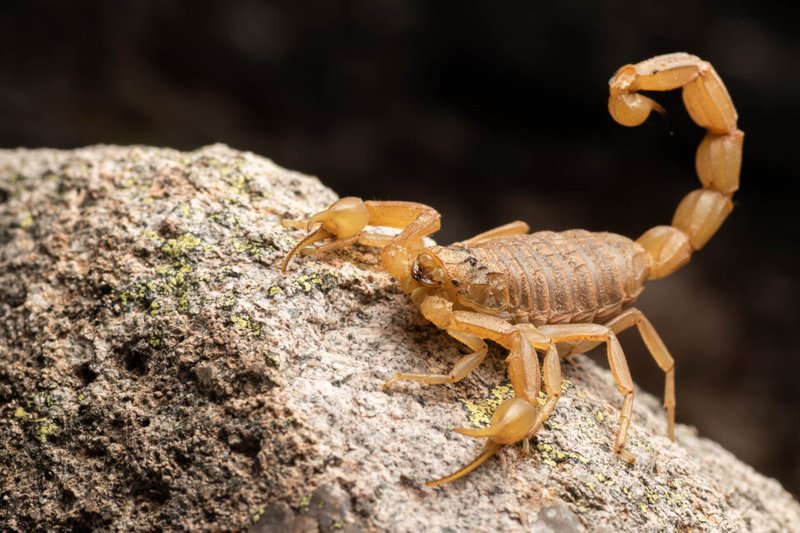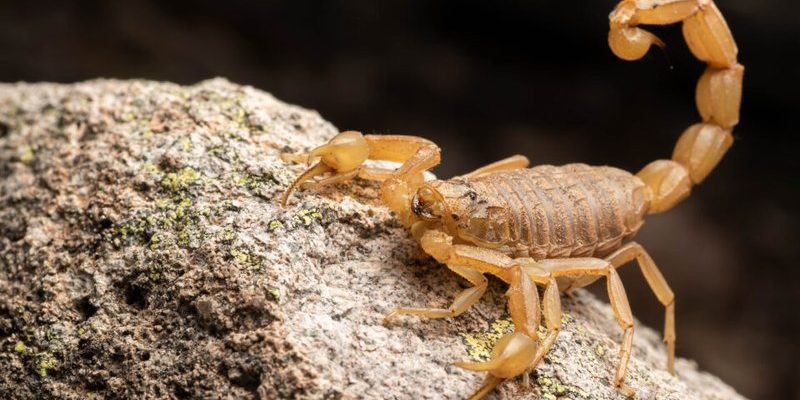
You might be wondering what makes the Arizona bark scorpion so special. Well, it’s not just about its venomous sting—though, yes, that’s a big deal! Understanding this little critter, along with how it compares to other scorpions, can clear up a lot of misconceptions. Whether you’re fascinated by nature or just curious about what crawls around in your backyard, knowing these differences can help you appreciate these creatures more.
What is the Arizona Bark Scorpion?
The Arizona bark scorpion (Centruroides sculpturatus) is the most venomous scorpion in North America. This little guy is usually about 2-4 inches long and has a slender body with a distinctive pale yellow color. You can often find them hidden under rocks, in sand, or even in your home if you live in warmer climates.
Unlike some of its relatives, which may burrow underground or prefer more humid environments, the Arizona bark scorpion thrives in dry, warm areas. They love the deserts and the suburbs of Arizona, where they can easily find food and shelter. Honestly, they’re a bit of a mixed bag—they can be both fascinating and somewhat frightening.
One interesting fact about the Arizona bark scorpion is that it can glow under ultraviolet light! This is due to substances in its exoskeleton, which are thought to help in finding mates or camouflage. So, if you’re ever catching a glimpse of one in the dark, you might just see an eerie glow!
Comparing Venom Potency
You might have heard that scorpions sting, but not all stings are created equal. The venom of the Arizona bark scorpion is particularly potent, and that’s where things get a bit intense. The venom contains neurotoxins that can cause a range of symptoms in humans, from pain and swelling to nausea and difficulty breathing.
In contrast, other common scorpions like the yellow scorpion or the striped scorpion have venom that is less harmful to humans. While their stings can still be painful, they typically don’t lead to serious health issues unless someone has a severe allergic reaction.
Understanding the differences in venom potency is crucial for anyone living in areas where these scorpions roam. It’s like knowing which mushrooms are edible; some you can touch, while others can land you in the ER. Knowing your local scorpions can help you stay safe.
Behavior and Habitat
Behaviorally, the Arizona bark scorpion is quite unique. Unlike many other scorpion species that are nocturnal, these little guys are active at night but tend to seek shelter during the day, hiding in cool, dark locations. This behavior makes them less likely to be seen, but it also means they can easily end up in human homes, especially if you live in the desert.
On the other hand, species like the Texas scorpion (Hadrurus arizonensis) are more territorial and can be more aggressive. They often stay in their burrows and only venture out for food rather than wandering into people’s living spaces. So, if you’re wondering why you might see an Arizona bark scorpion outside more often than a Texas scorpion, that’s the difference in their behavioral habits at play.
This difference in habitat preference also affects where you might find these creatures. Arizona bark scorpions are usually found in urban areas, while other species may prefer secluded, rocky environments away from human activity.
Physical Differences
When it comes to physical traits, scorpions can vary quite a lot. The Arizona bark scorpion’s slender, elongated body and large pincers make it quite distinctive. It usually has a smooth exoskeleton with a yellow-tan hue, which helps it blend into its desert surroundings.
In contrast, some other species, like the giant desert hairy scorpion, have a bulkier shape and hairy legs. These hairy legs give them better traction and help them navigate the sandy desert terrain. While the bark scorpion is sleek and nimble, the giant hairy scorpion is more robust and can deliver a painful sting if threatened.
These physical characteristics not only help in identification but also in survival. A scorpion’s body shape and size can affect its hunting strategies and how well it can hide from predators.
How to Identify an Arizona Bark Scorpion
If you ever come across a scorpion, knowing how to identify it can make a world of difference. The Arizona bark scorpion has a few key features that help in distinguishing it from other species.
First off, it has thin pincers that are larger in proportion to its body compared to other scorpions. This gives it a characteristic look. The stinger, which is also quite prominent, can be seen clearly when the scorpion is raised.
You should also look for the two dark stripes running down the top of its body. This is another giveaway that you’re looking at an Arizona bark scorpion. While other species may have stripes or patterns, the unique combination of their features makes it relatively easy to identify—if you have the nerve to get a closer look!
Knowing how to identify this species can not only prevent unnecessary panic but also allow you to appreciate the role these creatures play in the ecosystem. They are predators of pests like insects, which helps keep the environment balanced.
Understanding Their Impact on Ecosystem
Scorpions, including the Arizona bark scorpion, play a vital role in maintaining ecological balance. They are mostly nocturnal hunters that feed on insects, centipedes, and even other small arthropods. By controlling these populations, scorpions help to prevent overpopulation of pests that can damage crops or spread diseases.
In their own way, they contribute to the health of their environment. Just think about it: if scorpions didn’t exist, we could face a surge in pests, which might lead to more issues for farmers and gardeners alike. So, as creepy as they can be, their presence often keeps things in check.
However, it’s essential to understand their role as predators without forgetting about safety. If you encounter an Arizona bark scorpion, it’s best to give it space and let it do its thing. After all, every creature has a purpose, even the ones that send shivers down your spine!
Final Thoughts
In summary, while the Arizona bark scorpion might seem intimidating, it’s important to recognize its unique characteristics and role in the ecosystem. By understanding how it differs from other scorpion species in terms of behavior, venom potency, physical traits, and habitat, you can develop a deeper appreciation for these fascinating creatures.
Whether you’re living in the deserts of Arizona or simply intrigued by nature, knowing about the Arizona bark scorpion helps demystify this amazing little critter. So the next time you hear a creepy crawly story, you can confidently share your newfound knowledge about the differences between the Arizona bark scorpion and its relatives. Who knew learning about scorpions could be this interesting?

